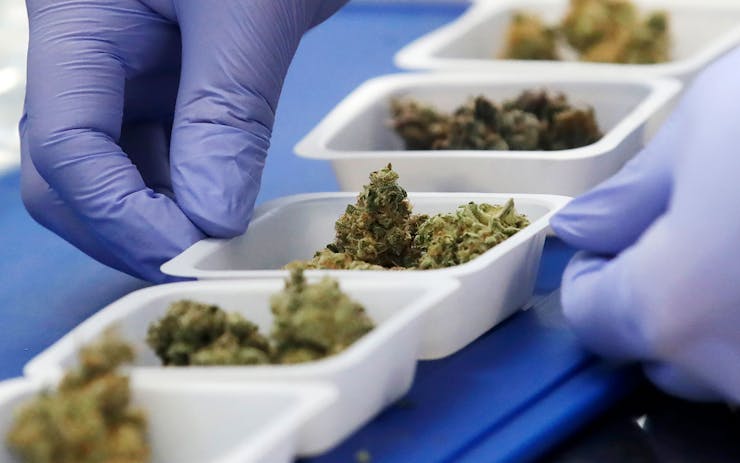Any brand can claim that their cannabis products are “lab tested.” But this doesn’t really mean anything unless they provide access to third-party lab results. By “third-party” we’re referring to a lab that is completely independent of the producer. These results can provide you with proof that the product you’re buying is as claimed, with respect to potency, purity, and safety.
Some producers publish results on their product packaging, although depending on region-specific labeling laws, this information is likely to be limited. Others will provide access to detailed lab test results (usually a Certificate of Analysis) for a given batch of a product online, such as via a batch number or QR code. For other products, you may need to contact the brand directly.
If a producer refuses to hand over lab test results, this is a red flag that either the product hasn’t been tested or that there’s some reason the company doesn’t want the results to be viewed. It’s worth noting that not all labs can be trusted to deliver accurate data and there is inconsistency in testing across the industry. Members of the Leafly Certified Labs Program have been vetted to confirm that they provide trustworthy results.
Check out why it’s important to be review lab test results on cannabis products below.
Deciphering lab test results
Note that some sets of results may not be as thorough as others. The tests performed depend on various factors, including the product type and its intended use, and relevant local regulations.

(Leafly)
Cannabinoids
In terms of potency, most results will at the very least show the levels of THC, CBD, and other cannabinoids in the product. These are the active substances that are responsible for the various psychological and physiological effects of different strains.
While THC and CBD are the most common, others are important too, including THCa, THCV, CBDa, CBN, CBC, and CBG.
Terpenes
Although they are less commonly found in lab test results, for some products, terpene levels are provided. Terpenes provide much of the flavor and aroma of cannabis products. They are intentionally removed from some products, but are desirable in others.
Specific terpenes you may see results for include myrcene, limonene, and terpinolene.
Moisture content
The Certificate of Analysis (COA) for some products, for example, cannabis bud, will reveal the moisture content of the test sample. If the moisture level is high (above 15%), there is an increased risk of fungi and bacteria thriving in the product. If it’s too low (below 5%), the bud could be dry and brittle, leading to a less enjoyable experience.
Residual solvents
Some methods used in cannabis production, particularly extractions, can result in low levels of solvent being left behind. Some of these residual materials could potentially cause harmful health effects if the levels are too high.
Acceptable levels for various solvents differ depending on the region. Common solvents that must be tested for include butanes, propane, benzene, and xylenes. Not all of these are used in extraction processes; some of the more harmful substances are present as contaminants.
Other safety tests
Aside from residual solvent analysis, there are other tests that can help confirm that a product is safe for consumption. For example, residues from plant treatment agents could end up in the final product, so there is a long list of common pesticide compounds that may be tested for.
Another concern is microbial growth in samples, in particular those with a higher moisture content. As such, microbial tests for things like E. coli, salmonella, yeast, and mold are performed to ensure the product meets set standards.
Heavy metals represent yet another concern in cannabis products. These may accumulate in the plant after being absorbed from fertilizers or contaminated soil. Heavy metals are known to be highly toxic to humans, as our bodies can’t efficiently remove them. The main heavy metals to worry about are arsenic, cadmium, lead, and mercury, but they are often accompanied by several others when documented in a COA.
Lab test results can provide a wealth of information about the product you’re purchasing, including its purity and potency. They also serve to confirm its safety for consumption. You should be able to access test results relatively easily. If you can’t, then you may need to question the authenticity of the product.





